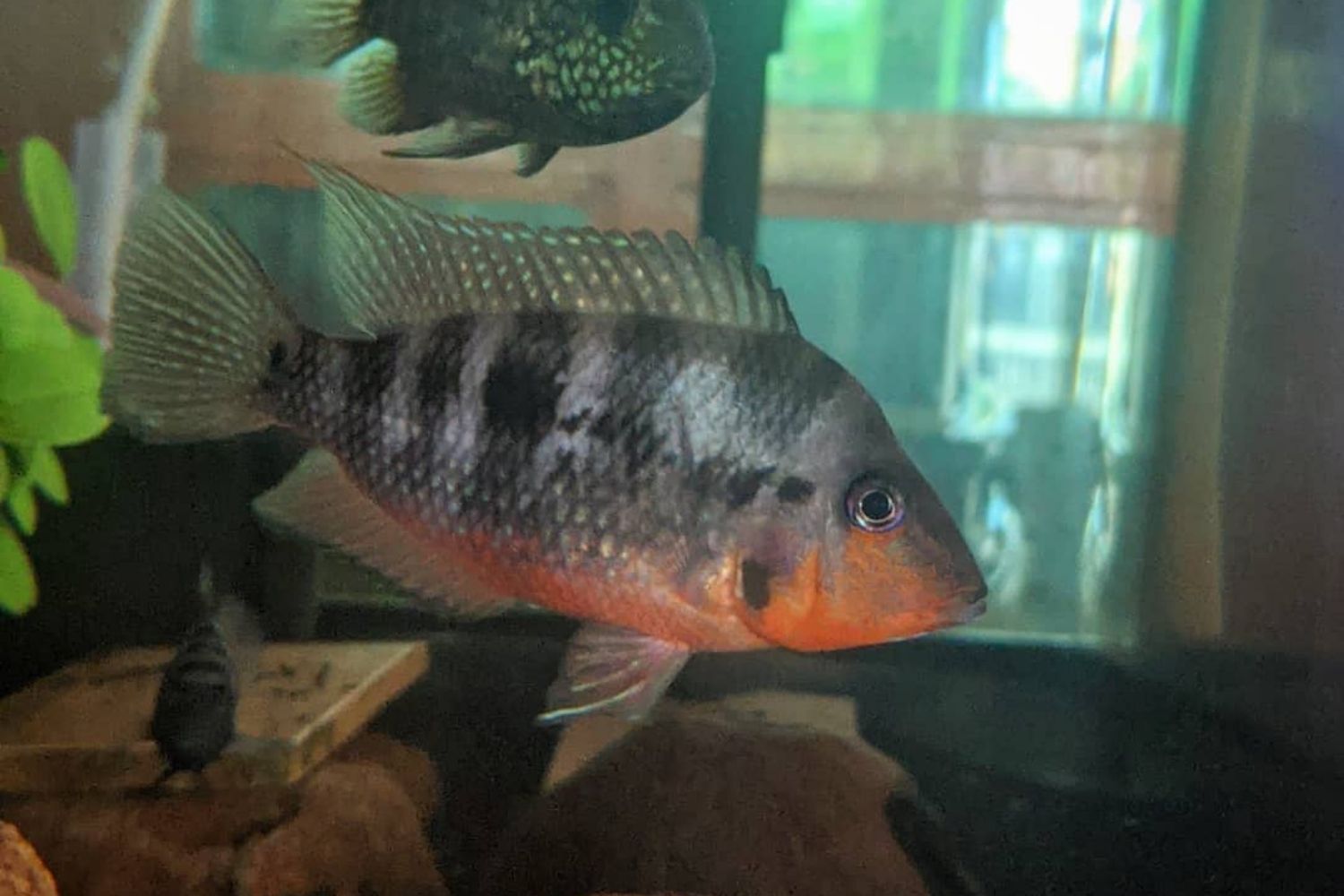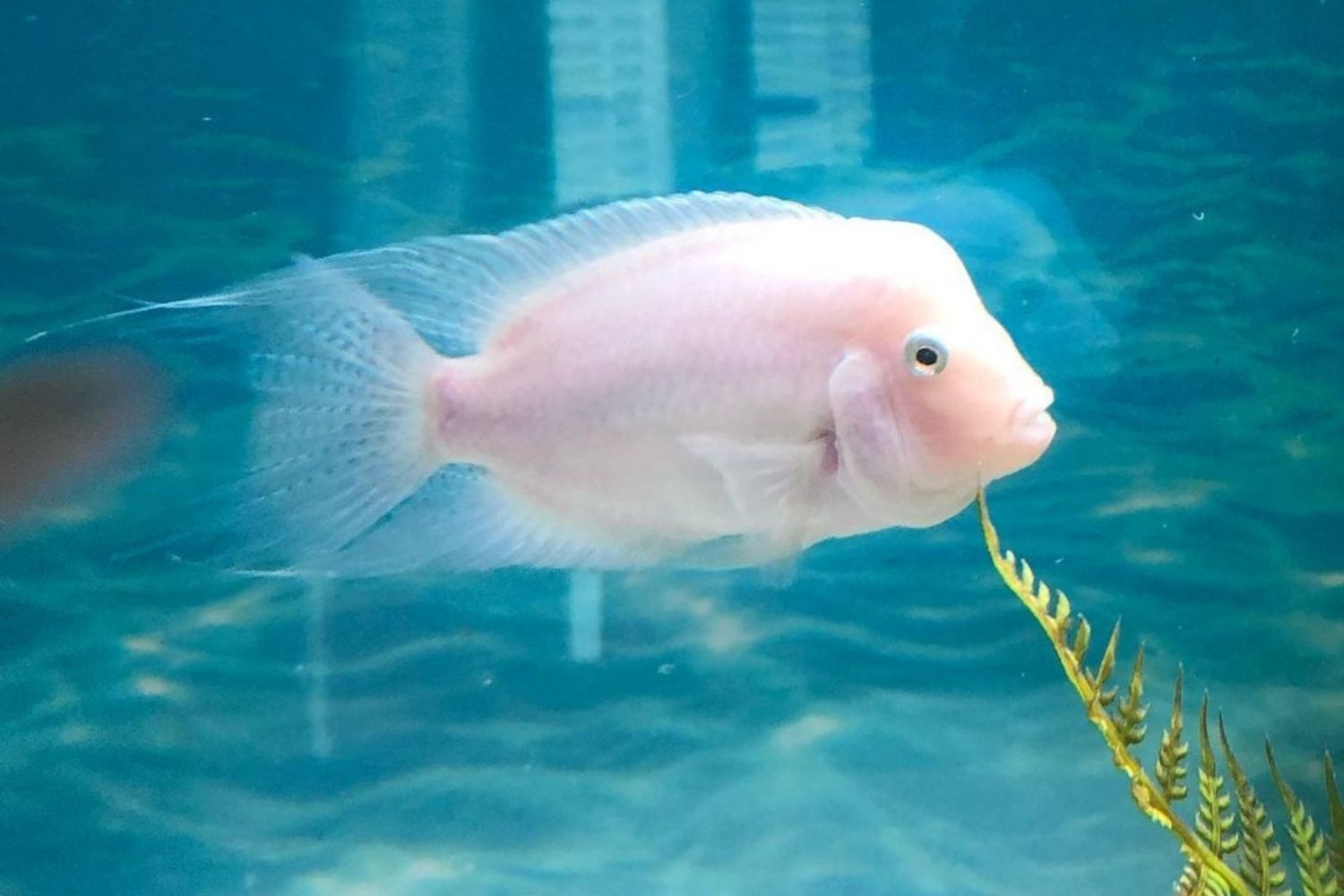Curious about Convict Cichlid? That is what we are talking about here! Convict Cichlid is a very interesting fish belonging to the Cichlidae family.
Its common reach expands toward the east from the Río Tonalá framework close to Coatzacoalcos, on Mexico’s Atlantic incline, through the provinces of Veracruz, Chiapas, Tabasco, around the Yucatán Peninsula, at that point toward the south into northern Belize and Guatemala. Naturalized populations are found in Hawaii and Puerto Rico, but there are reports even from Arizona and Florida states, USA.
On this care guide, you will discover everything you need to know to keep black Convict Cichlid healthy and happy.
Overview
One of the first things you’ll notice when keeping a Convict Cichlid fish is that they are far away from having a shy temperament. This doesn’t mean they like to live in a community. Convict Cichlids fish is considered highly territorial, and if fish enter their territory, they can be very aggressive.
For a beginner, the easiest way to prevent issues with other fish is to keep Cichlids with no other species. If you want to add a Convict Cichlid to a community tank, then you must make sure that there are any small or less aggressive fish. They can be kept easily with larger species like:
- Jack Dempsey Cichlid
- Jaguar Cichlid
- Flowerhorn Cichlid
- Peacock Cichlid
- Firemouth Cichlid
- Red Devil Cichlid
Like every other Cichlid, even for Convict Cichlids, having enough space in their tank, it’s very essential. Having at least a 30-gallon tank, it’s important, even though it’s hard to make general statements because each fish is different.
If you want to keep Convict Cichlid together, make sure to prepare for them to breed. In this case, it’s not advisable to keep breeding pairs in a community tank, as they get more aggressive and territorial during spawning time.
| Care level | Moderate |
| Lightning | No requirements |
| Diet | Omnivore |
| Behavior | Aggressive |
| Temperature | 75° - 79° F |
| pH | 6.60-7.8 |
| dH | 6-8 |
| Lighting | No special requirements |
| Minimum tank size | 30 gallons |
| Maximum size | 3 inches ( 7.5cm ) |
| Average adult size | 5-6 inches |
| Compatibility | Limited-aggressive |
| Tank set-up | Freshwater: driftwood and caves |
Behavior & Temperament
The first thing to know about the temperament of a Convict Cichlid is that they are quite territorial, and when wanting to provide good care, it’s essential to understand their aggressive tendencies. Anyway, when Convict Cichlid has the right environment with enough space and the right tank mates, this isn’t something to worry about.

Convict Cichlid like to hide on rock or plants.
When Convict Cichlids live in a large tank with many places to hide, like plants, rocks, and driftwood that give them some element of privacy, they are much less territorial. These fish are highly active. They love to move. These fish love to investigate all the areas of the tank. They always seem to be up to something.
That’s why adding Subwassertang or Christmas Moss to their tank is a good idea, as it can help them reduce stress. You will see them try to do some digging, but most of the time, Convict Cichlid fish stay in the middle of the tank.
Size and Lifespan
Compared to other Cichlid species, these fish are smaller. Their size is 5-6 inches when fully grown. This means that you can keep them in smaller tanks as well. These fish don’t require special accommodations since they have a normal growth rate.
Male Convict Cichlid tend to be larger, but their gender it’s not notable until they are fully grown. They have a transparent and average sizing caudal fin, shaped as an asymmetrical shell, helping them produce power and have well-rounded mobility in water.
Black Convict Cichlid
Named after their black vertical bars, black Convict Cichlid coloration varies based on age, type, and gender. The standard Convict Cichlid variation, depending on genetic components, can have around eight bars which are the most essential thing that the sellers look for with these fish. You will likely have plenty of well-defined stripes if you are buying from a reputable shop.

That’s how black Convict Cichlid looks like.
The body of Convict Cichlid is greyish-blue, while the bars covering it are black. The color of their body can vary, even though it usually is consistent. When buying a Convict Cichlid, make sure to look carefully at its color. Sometimes, the tank lighting tricks it by giving the idea of another pigment.
Origin & Natural Habitat
From Costa Rica to Panama, Convict Cichlid lives in the warm waters of Central America. Streams are the most common habitat where they can be found, enjoying slow-moving water and hiding in every possible spot, like rock patterns or fallen branches.
Considered as very hard fish, they survive without any problem in a vast variety of water due to their large natural habitat.
For setting up the aquarium can be used driftwood, sand, rocks, and a lot of plants. Make sure to use strong plants (Amazon Swords or Hygrophila Pinnatifida) and anchor them because these strong swimmers like a lot to ‘redecorate their tanks. Convicts are known to create a lot of mess, and at times, they can dig out of the substrate, so you must ensure not to let the water get murky by a strong filtration setup.
Food & Diet
Convict Cichlids feed on small insects, worms, plant matter, and algae in the wild habitat. They will happily eat nearly anything offered to them in the home tank. But you must take care to give them a healthy diet made up of high-quality fish food, adding sometimes even frozen foods as treats.
Talking about their favorite frozen foods, we can mention blood worms, daphnia, and brine shrimp. When it comes to living foods, they can love any cultured or caught food, like mosquito larvae or live black worms. Convict Cichlids must eat two or three times a day. If they don’t eat their food in one or two minutes, they should not be fed more.
Care Guide & Tank Requirements
A spacious, species-only aquarium would be perfect for a messy fish like Convict Cichlid. The ideal tank size is about 30 gallons (100 liters), but a nonbreeding pair can be housed even in a 20-gallon tank.

Try to give some tank space to Convict Cichlid as it makes it happy.
A soft and sandy substrate with smooth rocks, some driftwood roots, and branches placed in a way that formed a lot of caves and shady spots, would be a nice arrangement for these fish. It is important to never introduce the fish to a biologically immature aquarium since it naturally inhabits pristine environments, and the water quality is essential.
Water Parameters & Lighting
Warm water at a temperature of 75-79 °F is perfect for Convict Cichlid, with a ph about 6.6–7.8 and a hardness of 6 — 8 dGH, even though it can live under various parameters of water acidity and hardness. Taking care of this fish is easy because it isn’t a demanding fish. To make the fish comfortable, you can put some substrate, snags, roots, and stones.
Cichlids live in the dark, murky conditions full of plants, rocks, and algae since their origin is from some of the deepest lakes in the world. It is advisable to use fluorescent tubing rather than incandescent bulbs because these give out light rather than heat, keeping this way water at a consistent temperature.
Breeding
Convict Cichlids breed in nearly any proper environment so water quality, temperature or tank size, and other parameters are not as important to Convicts as they may be in other species.
It is well, to begin with a group of young fish and let pairs form naturally if you don’t have two sexed adults.
Letting them pair naturally is important for these fish because, according to some studies. Convict Cichlid females can turn into pessimists when separated from partners or when you let them with an unwanted partner.

Pink Convict Cichlid, a rare Convict fish color.
The place to lay eggs would be a solid surface such as a flat rock, piece of driftwood, broad plant leaf, or aquarium glass. If the pair feel threatened or disturbed, they can eat the first brood(s). The female lays one or more rows of eggs before the male moves in to fertilize them, and then the process will be repeated diverse times.
During the incubation process, the male stays around trying to defend the territory, while the female stays close to the eggs defending from intruders. It’s advisable to remove tank mates if maintaining the adults in a community situation.
Sex Difference
Considered as one of the smaller Central American Cichlids, Convict Cichlids can reach a maximum size of 5-6’’(13-15 cm) when fully grown up. The male Convict Cichlid tends to be larger than the female Convict Cichlid, but the female will be more colorful. Also, a steeper forehead is another difference that male Convicts have, and they develop longer pointed anal and dorsal fins.
Tank Mates
Being in the Cichlid family, these fish tend to be aggressive, so in small tanks, it is advisable not to keep more than a couple of cichlids. Especially during the spawning time, they become very aggressive and may attack other fish. If you want to keep them in the community, choosing a spacious aquarium is important as they are highly territorial. So important also is to choose strong and larger tank mates like:
- Green terrors
- Jewel cichlids
- Firemouth Cichlids
- Blue acara
- Texas Cichlids
- Juvenile Red Devil Cichlids
- Rainbow Cichlids

You can keep two Convict Cichlids together without a problem.
Conclusion: Can You Keep Convict Cichlid in Your Tank?
As a small-sized fish, Convict Cichlid can be kept easily. They don’t require much tank space. It is recommended to choose wisely their tank mates due to their aggressive and territorial nature. Going for other fish members of the Cichlid family is the best option. They can peacefully live together.

